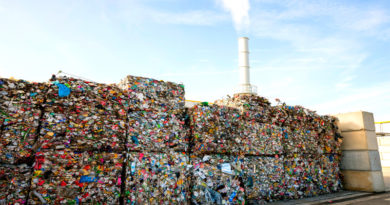A Revival Plan that ticks all the right boxes. Delhi’s Rajokri Lake
 Pic Courtesy: DJB
Pic Courtesy: DJB
More with less seems to be a motto that is actually being practiced in Delhi’s lake revival plan. With just a Rs 36 crore budget to revive 159 water bodies in the city, some very innovatve options have emerged. That shd be great news for the city’s residents, as they look for respite from the relentless urbanisation and habitat destruction, besides a looming water crisis. Five ‘mega’ lakes in Rohini, Nilothi, Dwarka, Najafgarh and Timarpur are also part of the plan.
The plan took off recently when Delhi CM visited the pond in Rajokri, on the ridge near the Gurugram border, which underwent a total transformation after it was selected as a pilot project for a decentralised mini-sewage treatment system.
@ArvindKejriwal inspects the Rajokari water-body on 27.12.2018. All the dirt, mud, sewer of the settlements in the area came in this water-body, which breeded flies and mosquitoes in the entire area but now these problems will be solved pic.twitter.com/OXlup63KoE
— Delhi Jal Board (@DelhiJalBoard) December 27, 2018
Till last year this was a dirty and turbid pond fed by sewage from the nearby shanties. Now there is a welcoming 9,500 Sq meters of redeveloped area, where there is a 2000 sq mts of a water body supplied by purified effluents that had earlier polluted it.
The AAP Government is hopeful that Rajokri Pond will be the template for the revival of another 159 water bodies in the city-a welcome initiative in NCR where water tables have fallen over decades to alarming levels. Sustainability is not even a word mentioned in the context of water, as the city continues to depend more and more on external sources to quench its thirst.
Once all the lakes have been constructed, the cumulative lake area will be over 350 acres, with a potential to hold 1,581 million litres of water, officials said.
As per media reports, treated water from small, decentralized sewage treatment plants will be used to feed smaller lakes in the city, and floating wetlands with aquatic flora and mechanized aeration systems that support further cleaning up of the water will also be part of the project. While this is a worthy pursuit, and the Delhi government deserves kudos for acting on a vision that got stuck in policy lethargy for years, the DJB needs to also focus on the larger problem(s).
The Rajokri lake project has every possible aspect covered, from local involvement in the form of a clean Chhath ghat and open air gyms, to using natural SWAB tech (Scientific Wetland System With Active Bio Digester)to clean the water, to solar pumps that push the putput to the lake area.
Groundwater levels have been dropping for years but providing safe and adequate drinking water for the over 15 million people residing in Delhi is now a big challenge for government agencies. And it is clear that India’s capital is sitting on a time bomb.
According to official figures, Delhi has a water requirement of 1,100 million litres on a daily basis out of which the Delhi Jal Board (DJB), the city’s agency responsible for providing water to its citizens, is able to fulfill the requirement of up to 900 million litres of water daily. The gap of 200 million litres is met by groundwater reserves. The depth to water in the Delhi state varies greatly from 1.2 meters (in the Yamuna floodplain) to more than 64 meters (in the southern part of the Delhi Ridge) below ground level.
While rainwater harvesting is often cited as a solution, DJB says that other ways of recharging groundwater are being explored in the comprehensive plan. Delhi only gets 23-26 rainy days – mostly around the monsoon. So it becomes very important to focus on treatment of wastewater as well. DJB is considering giving a waiver of 50% on sewer charges as an incentive to install wastewater treatment plants. To that end, the DJB did well to announce plans to emulate Singapore’s sewage reclamation project NEWater and improve availability by 15-20% over the next couple of years and 50% in the next five.
DJB chief Mohaniya, says that the body wants to treat 10 million litres of water daily in a single premise or establishment and then the wastewater can be used to water plants and rest can be stored in the underground aquifer. It will be a zero liquid discharge policy and the electricity cost of these plants would be zero as they are designed to run on gravity gradient.
There is of course another way to salvage the damage. Delhi loses 45% of its water during transmission due to leakage in pipes. Plugging these leakages, although some of it is theft too, will go some way to keep the crisis at bay for a large pat of its denizens.




